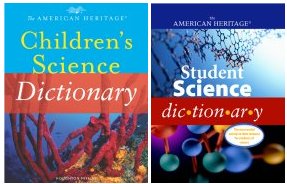A big discovery about little people Additional Information
Share this:
- Share via email (Opens in new window) Email
- Click to share on Facebook (Opens in new window) Facebook
- Click to share on X (Opens in new window) X
- Click to share on Pinterest (Opens in new window) Pinterest
- Click to share on Reddit (Opens in new window) Reddit
- Share to Google Classroom (Opens in new window) Google Classroom
- Click to print (Opens in new window) Print
McDonagh, Sorcha. 2003. The puzzle of ancient mariners. Science News for Kids (Oct. 22). Available at http://www.sciencenewsforkids.org/articles/20031022/Note3.asp.
Sohn, Emily. 2006. Big woman of the distant past. Science News for Kids (March 1). Available at http://sciencenewsforkids.org/articles/20060301/Note2.asp.
______. 2004. Little people cause big surprise. Science News for Kids (Nov. 3). Available at http://sciencenewsforkids.org/articles/20041103/Note2.asp.
Books recommended by SearchIt!Science:
![[book]](https://www.sciencenewsforstudents.org/wp-content/uploads/2019/11/a1491_b1442.jpg) |
The Bone Detectives: How Forensic Anthropologists Solve Crimes and Uncover Mysteries of the Dead
Published by Little, Brown and Co./AOL Time Warner, 1996
“More than two hundred bones hold our bones together, and each one tells a story,” writes Donna M. Jackson in her book entitled The Bone Detectives. What stories can bones tell us? Can they help us to solve crimes? Can they help us to learn about our ancient ancestors? Can they help us to identify famous historical figures? Indeed they can! Bone detectives, or physical anthropologists, examine skeletal remains and try to discover the story behind the bones. In this book, you can learn about how physical anthropologists and other forensic scientists helped to solve a murder mystery with just a few bones, several hair strands, worn blue jeans, a piece of a plastic bag, and a button. You can also learn about “Lucy” and the “Iceman”, whose remains give us clues about our common ancestors. Finally, you can learn about the ways that scientists identified the bones of Jesse James, an infamous outlaw, and of Mitch Boyer, a scout for Lt. Col. Custer in 1876. This book, with its photographs, skeletal diagrams, and glossary of forensic science terms, helps us to understand some of the ways that science helps us to learn more about history! |
![[book]](https://www.sciencenewsforstudents.org/wp-content/uploads/2019/11/a1491_b2458.jpg) |
Painters of The Caves
Published by National Geographic Society, 1998
In 1994, three cave explorers found a thirty-two thousand year-old art museum in a cave in France. The cave contained detailed and beautiful drawings of animals done by the first early humans to settle in Europe. These cave drawings are twice as old as any other drawings ever discovered. They prove that early humans thought a lot more about their surroundings and activities than they had been given credit for. The drawings of woolly rhinos, horses, bison, lions and mammoths are amazing. But what were they for? Pleasure? To record the history of the tribe? Magic? This book explores what the lives of these ancient humans may have been like, and what their reasons may have been for making these drawings. |
![[book]](https://www.sciencenewsforstudents.org/wp-content/uploads/2019/11/a1491_b3341.jpg) |
Hominids: A Look Back at Our Ancestors
Published by Lothrop, Lee & Shepard Books/William Morrow/HarperCollins, 1988
Humanlike creatures have probably lived on the earth for more than 4.5 million years. Our ancient ancestors didn’t look exactly like we do, though. Scientists think they were smaller, probably 4 to 5 feet in height. Their jaws were larger and their heads tilted forward. This book describes the earth’s first humans and how they developed into modern people. Black-and-white illustrations accompany this dramatic story of humankind. A time chart, a species chart, a bibliography, an index, and maps are included. |
Power Words
human 1. A member of the species Homo sapiens; a human being. 2. A member of one of the extinct species of earlier primates that are closely related to Homo sapiens, such as a Cro-Magnon or a Neandertal.
Neandertal (also spelled Neanderthal) An extinct variety of human that lived in Europe, Africa, and Asia until about 30,000 years ago. Neandertals usually lived in caves, made stone tools, and were the earliest humans known to bury their dead.
species One of the major groups in the classification of living things. A species is below a genus. Only organisms that belong to the same species are able to breed with each
other.
Copyright © 2002, 2003 Houghton-Mifflin Company. All rights reserved. Used with permission.
